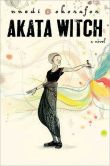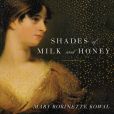Will Shetterly wrote a blog post asking if I had addressed “RAINN’s refutation of ‘rape culture’” yet. I’m writing this less to respond to Shetterly and more because I think there’s some good conversation to be had around RAINN’s recommendations. But I should warn folks that by invoking his name and linking to his blog post, I’m basically guaranteeing that Mr. Shetterly will show up in the comments. To Will and anyone else, please remember that trolling, refusing to respect boundaries, and general dickishness will get you booted.
The Rape Abuse Incest National Network (RAINN) released 16 pages of recommendations to the federal government. In his blog post, Will chooses to quote a TIME Magazine article by Caroline Kitchens about “Rape Culture Hysteria” that references a few select paragraphs from RAINN’s recommendations. Kitchens claims that by blaming rape culture, we “implicate all men in a social atrocity, trivialize the experiences of survivors, and deflect blame from the rapists truly responsible for sexual violence.” She talks about the “thought police of the feminist blogosphere,” and how the concept of rape culture poisons the minds of young women and creates a hostile world for young men.
I’m glad to know Mr. Shetterly is looking for good, objective reporting to validate his crusade against those he dubs “social justice warriors.”
Let’s look at the primary source and talk about what RAINN’s recommendations actually said, shall we?
The paper opens with a discussion of how rape is alarmingly underreported on college campuses. Rape culture is mentioned on page two:
“In the last few years, there has been an unfortunate trend towards blaming ‘rape culture’ for the extensive problem of sexual violence on campuses. While it is helpful to point out the systemic barriers to addressing the problem, it is important to not lose sight of a simple fact: Rape is caused not by cultural factors but by the conscious decisions, of a small percentage of the community, to commit a violent crime.”
I absolutely agree that it’s important to hold rapists accountable for their choice to rape. I’ve been saying and emphasizing and teaching that for decades. I think it’s absurd to claim an individual has no responsibility for their crime … but it’s equally absurd to claim that crime occurs in a cultural vacuum, or that these two ideas are mutually exclusive.
Most of the time, when I see rapists being excused with little more than a wrist-slapping for “cultural” reasons, it’s judges and police blaming victims, or the old “boys will be boys” attitude that minimizes the severity of the crime and the responsibility of the rapist. Which is exactly what so many conversations about rape culture try to point out.
RAINN says it’s important to remember that the rapist is responsible for the choice to commit rape. I agree. They do not say that the concept of rape culture is invalid, only that it shouldn’t overshadow the need to hold individuals responsible for their crimes.
RAINN recommends a three-tiered approach to reducing rape on college campuses:
- Bystander intervention education: empowering community members to act in response to acts of sexual violence.
- Risk-reduction messaging: empowering members of the community to take steps to increase their personal safety.
- General education to promote understanding of the law, particularly as it relates to the ability to consent.
Bystander intervention includes educating people about what rape is, helping them see beyond rape myths and victim-blaming narratives, sharing the research that explains how the majority of rapes are committed not by strangers, but by people the victim knows, and so on. (Strangely enough, a lot of the points I made in a blog post about rape culture a few years back.)
RAINN acknowledges the difficulty in separating risk-reduction from victim-blaming. Personally, I have very little problem with a risk-reduction approach. I do have a problem when that’s the only approach, which seems to happen all too often. When people focus solely on what women/victims can and must do to reduce rape, then we put the responsibility on them. If your only idea about reducing rape is to tell women what to do differently, you’re the one who doesn’t understand that rapists are responsible for their decision to rape.
I’ve been pushing for education for ages, including education about the laws. And for improvement in those laws, based in part on a better understanding and definition of consent. Unfortunately, a lot of people have a very poor understanding of consent. We encourage things like getting prospective sexual partners drunk, pursuing reluctant or uninterested partners, and the myth that you should just magically know what your partner wants. (It’s almost like we have an entire culture that doesn’t really get how consent works.)
On the legal side of things, RAINN stresses that college advisory boards aren’t in a position to be deciding rape cases. I agree. I worked as part of a student justice program at Michigan State University. Rape cases went to the police. We tended to work with things more on the level of catcalling from the street, trying to intervene with behaviors and attitudes before they escalated to more serious crimes. The goal was early intervention and prevention.
But there’s also a culture (oh look, there’s that word again) of secrecy around sexual assault and abuse, and I certainly understand that many institutions do try to bury rape reports and pretend it’s not a problem for them. Steubenville is a good, well-known example.
The report then goes on to talk about:
- The need for more education for everyone about rape
- The need for the legal system to respond more seriously to rape cases
- The need to provide support services to victims
- The need for more research
In RAINN’s 16-page report, we find a single mention of “rape culture,” which is part of a paragraph stating that rape culture shouldn’t be used as a way to remove responsibility from the rapist. Sorry, Will. I see no “refutation of rape culture” here, just a call for a balanced approach, one which I generally support and agree with.
I get that Mr. Shetterly is mostly just interested in scoring points against those he deems “social justice warriors.” My advice to him would be that if your knowledge and understanding of rape is such that you believe “saying no usually works” to prevent it, maybe you should try talking listening to rape survivors and learning more about the topic before you try to have this kind of conversation.






 I finished reading
I finished reading 
 I will be totally, absolutely honest with you here. I wasn’t really expecting to like
I will be totally, absolutely honest with you here. I wasn’t really expecting to like